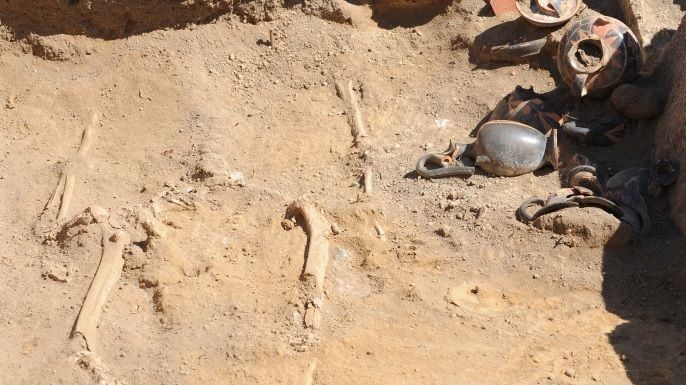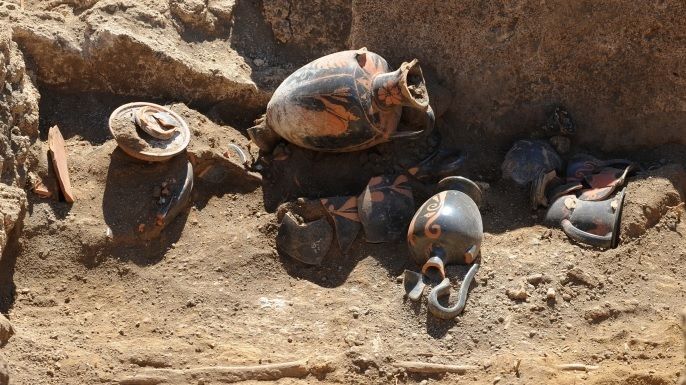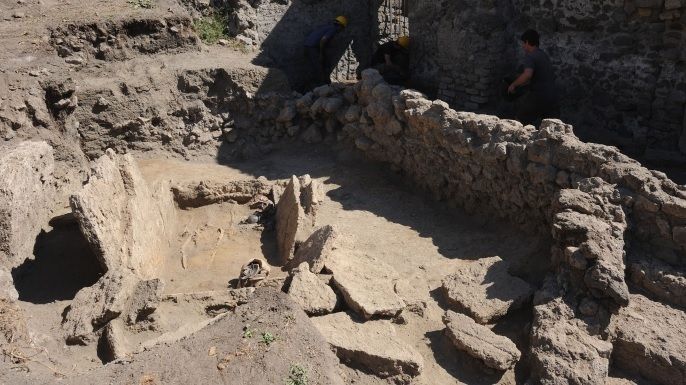Post by UKarchaeology on Sept 27, 2015 20:45:17 GMT

It’s one of the most famous natural disasters in history. On August 24, 79 A.D., Mount Vesuvius erupted, sending floods of ash, pumice and other debris onto the city of Pompeii, located at the volcano’s southeastern base in the Campania region of Italy. By the next day, the eruption had buried the city and its terrified inhabitants under nearly 20 feet of debris, where they would remain frozen in layers of ash for the next 1,500 years. Now, a team of French archaeologists working in Pompeii has made a remarkable find: a perfectly preserved pre-Roman tomb dating to the 4th century B.C., when Pompeii was home to the Samnite people.
Historians believe the Oscan people, descendants of Campania’s Neolithic inhabitants, built the city of Pompeii in the 6th or 7th century B.C. The Samnites, an Italic tribe, conquered the Osci in the 5th century B.C., though the city likely came under Greek and Etruscan influence before that time. After bitter struggles with the Romans during the 4th century B.C., the Samnites fell under Roman control, but they rebelled along with other Italians against Rome in 89 B.C. The forces of Roman general Lucius Cornelius Sulla besieged Pompeii at that time, but they didn’t manage to conquer the city until 80 B.C., barely a century before the fateful eruption would destroy it.

Though the ruins of Pompeii were initially discovered at the end of the 16th century, full-scale excavations didn’t take begin until the mid-18th century. Early excavations of Pompeii and nearby towns launched the modern science of archaeology, and ongoing excavation and research projects at the site today still involve thousands of archaeologists and other experts. In addition, more than 2.5 million visitors tour Pompeii every year, making the ancient city Italy’s second-most popular attraction, after the Colosseum in Rome.
During a recent dig focusing on Pompeiian artisanship and economy, researchers from the French Jean Berard Centre in Naples in southern Italy stumbled on a striking new find near the Herculaneaum Gate, alongside the famous Villa of the Mysteries. The nearly intact tomb dated all the way back to the 4th century B.C., and contained the remains of an adult woman, between 35 and 40 years of age, along with a number of vases and clay jars known as amphoras. The researchers determined that the pottery came from various regions of Italy, indicating a robust trade between the Samnites and other Italic peoples on the peninsula. The scientists will analyze the contents of the amphoras in the weeks to come, but they are believed to include food, wine and cosmetics.

The tomb’s intact condition suggests that the Romans living in Pompeii prior to Vesuvius’ eruption knew of its existence and did not disturb it or build on top of it. In addition to looters and shoddy archaeological digs that damaged other tombs and artifacts in Pompeii, the Samnite tomb also survived the ravages of World War II, in spite of the fact that the area where it was found sustained particularly heavy Allied bombing during the conflict.
The newly discovered tomb is especially exciting because it dates to a period about which archaeologists know relatively little. According to Massimo Osanna, archaeological superintendent at Pompeii, identifying the materials the woman was buried with will not only give scholars a window into funerary practices of the time but “will show us much about the role of women in Samnite society.” Archaeologists will now explore the region surrounding the tomb, as such tombs are rarely found in isolation.
The Italian government appointed Osanna to oversee the Pompeii site two years ago, after a series of collapses sparked international outrage over the maintenance of the ancient city. In a statement, Osanna underlined the importance of the new find: “These excavations prove that the city of Pompeii is still alive and that we must preserve it as it continues to provide us with material for research.”
(pics/source: www.history.com/news/archaeologists-unearth-intact-pre-roman-tomb-in-pompeii )
